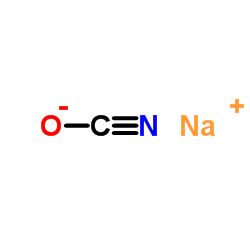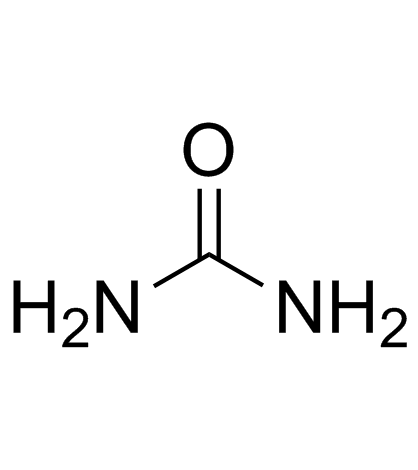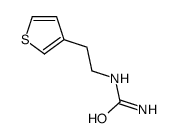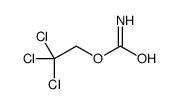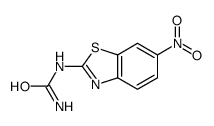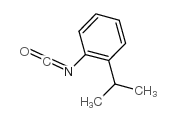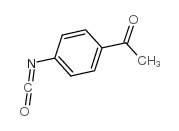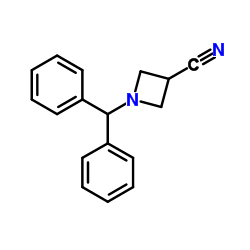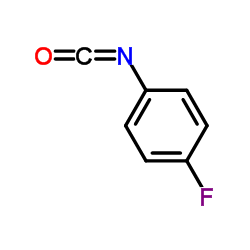CHEMICAL IDENTIFICATION
-
RTECS NUMBER :
-
GS7000000
-
CHEMICAL NAME :
-
Cyanic acid, sodium salt
-
CAS REGISTRY NUMBER :
-
917-61-3
-
LAST UPDATED :
-
199703
-
DATA ITEMS CITED :
-
13
-
MOLECULAR FORMULA :
-
C-N-O.Na
-
MOLECULAR WEIGHT :
-
65.01
-
WISWESSER LINE NOTATION :
-
NA OCN
HEALTH HAZARD DATA
ACUTE TOXICITY DATA
-
TYPE OF TEST :
-
TDLo - Lowest published toxic dose
-
ROUTE OF EXPOSURE :
-
Oral
-
SPECIES OBSERVED :
-
Human
-
DOSE/DURATION :
-
5400 mg/kg/24W
-
TOXIC EFFECTS :
-
Sense Organs and Special Senses (Eye) - visual field changes Sense Organs and Special Senses (Eye) - effect, not otherwise specified Nutritional and Gross Metabolic - weight loss or decreased weight gain
-
REFERENCE :
-
AROPAW Archives of Ophthalmology (Chicago). (AMA, 535 N. Dearborn St., Chicago, IL 60610) New series: V.1-44(3), 1929-50; V.64- 1960- Volume(issue)/page/year: 94,927,1976
-
TYPE OF TEST :
-
LD50 - Lethal dose, 50 percent kill
-
ROUTE OF EXPOSURE :
-
Oral
-
SPECIES OBSERVED :
-
Rodent - rat
-
DOSE/DURATION :
-
1500 mg/kg
-
TOXIC EFFECTS :
-
Details of toxic effects not reported other than lethal dose value
-
REFERENCE :
-
JPETAB Journal of Pharmacology and Experimental Therapeutics. (Williams & Wilkins Co., 428 E. Preston St., Baltimore, MD 21202) V.1- 1909/10- Volume(issue)/page/year: 185,653,1973
-
TYPE OF TEST :
-
LD50 - Lethal dose, 50 percent kill
-
ROUTE OF EXPOSURE :
-
Intramuscular
-
SPECIES OBSERVED :
-
Rodent - rat
-
DOSE/DURATION :
-
310 mg/kg
-
TOXIC EFFECTS :
-
Behavioral - altered sleep time (including change in righting reflex) Behavioral - convulsions or effect on seizure threshold Kidney, Ureter, Bladder - urine volume increased
-
REFERENCE :
-
BJPCAL British Journal of Pharmacology and Chemotherapy. (London, UK) V.1-33, 1946-68. For publisher information, see BJPCBM. Volume(issue)/page/year: 1,186,1946
-
TYPE OF TEST :
-
LD50 - Lethal dose, 50 percent kill
-
ROUTE OF EXPOSURE :
-
Unreported
-
SPECIES OBSERVED :
-
Rodent - rat
-
DOSE/DURATION :
-
1 gm/kg
-
TOXIC EFFECTS :
-
Behavioral - convulsions or effect on seizure threshold Behavioral - excitement Lungs, Thorax, or Respiration - dyspnea
-
REFERENCE :
-
GISAAA Gigiena i Sanitariya. For English translation, see HYSAAV. (V/O Mezhdunarodnaya Kniga, 113095 Moscow, USSR) V.1- 1936- Volume(issue)/page/year: 55(8),30,1990
-
TYPE OF TEST :
-
LDLo - Lowest published lethal dose
-
ROUTE OF EXPOSURE :
-
Oral
-
SPECIES OBSERVED :
-
Rodent - mouse
-
DOSE/DURATION :
-
4 mg/kg
-
TOXIC EFFECTS :
-
Details of toxic effects not reported other than lethal dose value
-
REFERENCE :
-
APFRAD Annales Pharmaceutiques Francaises. (SPPIF, B.P.22, F-41353 Vineuil, France) V.1- 1943- Volume(issue)/page/year: 19,740,1961
-
TYPE OF TEST :
-
LD50 - Lethal dose, 50 percent kill
-
ROUTE OF EXPOSURE :
-
Intraperitoneal
-
SPECIES OBSERVED :
-
Rodent - mouse
-
DOSE/DURATION :
-
260 mg/kg
-
TOXIC EFFECTS :
-
Behavioral - somnolence (general depressed activity) Behavioral - convulsions or effect on seizure threshold
-
REFERENCE :
-
JPETAB Journal of Pharmacology and Experimental Therapeutics. (Williams & Wilkins Co., 428 E. Preston St., Baltimore, MD 21202) V.1- 1909/10- Volume(issue)/page/year: 185,653,1973
-
TYPE OF TEST :
-
LD50 - Lethal dose, 50 percent kill
-
ROUTE OF EXPOSURE :
-
Unreported
-
SPECIES OBSERVED :
-
Rodent - mouse
-
DOSE/DURATION :
-
400 mg/kg
-
TOXIC EFFECTS :
-
Behavioral - convulsions or effect on seizure threshold Behavioral - excitement Lungs, Thorax, or Respiration - dyspnea
-
REFERENCE :
-
GISAAA Gigiena i Sanitariya. For English translation, see HYSAAV. (V/O Mezhdunarodnaya Kniga, 113095 Moscow, USSR) V.1- 1936- Volume(issue)/page/year: 55(8),30,1990 ** OTHER MULTIPLE DOSE TOXICITY DATA **
-
TYPE OF TEST :
-
TDLo - Lowest published toxic dose
-
ROUTE OF EXPOSURE :
-
Parenteral
-
SPECIES OBSERVED :
-
Rodent - rat
-
DOSE/DURATION :
-
840 mg/kg/14D-I
-
TOXIC EFFECTS :
-
Behavioral - sleep Nutritional and Gross Metabolic - weight loss or decreased weight gain Related to Chronic Data - death
-
REFERENCE :
-
BJPCAL British Journal of Pharmacology and Chemotherapy. (London, UK) V.1-33, 1946-68. For publisher information, see BJPCBM. Volume(issue)/page/year: 1,186,1946
-
TYPE OF TEST :
-
TDLo - Lowest published toxic dose
-
ROUTE OF EXPOSURE :
-
Unreported
-
SPECIES OBSERVED :
-
Rodent - rat
-
DOSE/DURATION :
-
182 mg/kg/26W-I
-
TOXIC EFFECTS :
-
Liver - liver function tests impaired Blood - changes in serum composition (e.g. TP, bilirubin, cholesterol) Biochemical - Enzyme inhibition, induction, or change in blood or tissue levels - phosphatases
-
REFERENCE :
-
GISAAA Gigiena i Sanitariya. For English translation, see HYSAAV. (V/O Mezhdunarodnaya Kniga, 113095 Moscow, USSR) V.1- 1936- Volume(issue)/page/year: 55(8),30,1990
-
TYPE OF TEST :
-
TDLo - Lowest published toxic dose
-
ROUTE OF EXPOSURE :
-
Intramuscular
-
SPECIES OBSERVED :
-
Rodent - rabbit
-
DOSE/DURATION :
-
1100 mg/kg/18D-I
-
TOXIC EFFECTS :
-
Behavioral - sleep Nutritional and Gross Metabolic - weight loss or decreased weight gain Related to Chronic Data - death
-
REFERENCE :
-
BJPCAL British Journal of Pharmacology and Chemotherapy. (London, UK) V.1-33, 1946-68. For publisher information, see BJPCBM. Volume(issue)/page/year: 1,186,1946 *** NIOSH STANDARDS DEVELOPMENT AND SURVEILLANCE DATA *** NIOSH OCCUPATIONAL EXPOSURE SURVEY DATA : NOHS - National Occupational Hazard Survey (1974) NOHS Hazard Code - A1310 No. of Facilities: 10 (estimated) No. of Industries: 1 No. of Occupations: 1 No. of Employees: 10 (estimated) NOES - National Occupational Exposure Survey (1983) NOES Hazard Code - A1310 No. of Facilities: 3 (estimated) No. of Industries: 1 No. of Occupations: 1 No. of Employees: 10 (estimated) No. of Female Employees: 3 (estimated)
|
